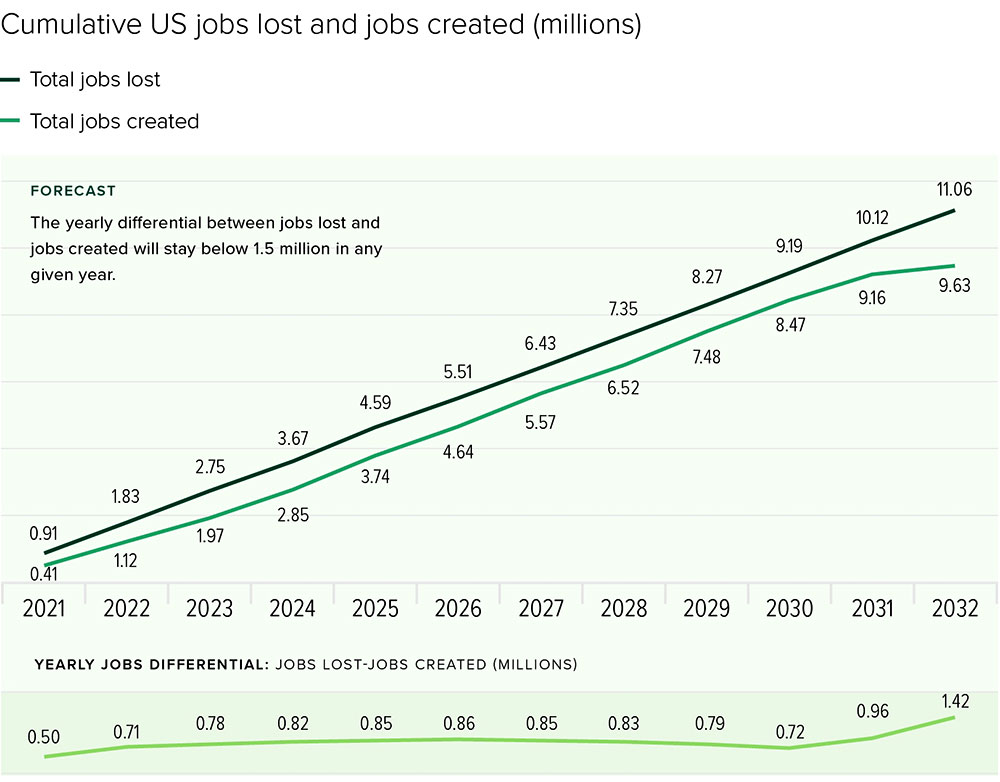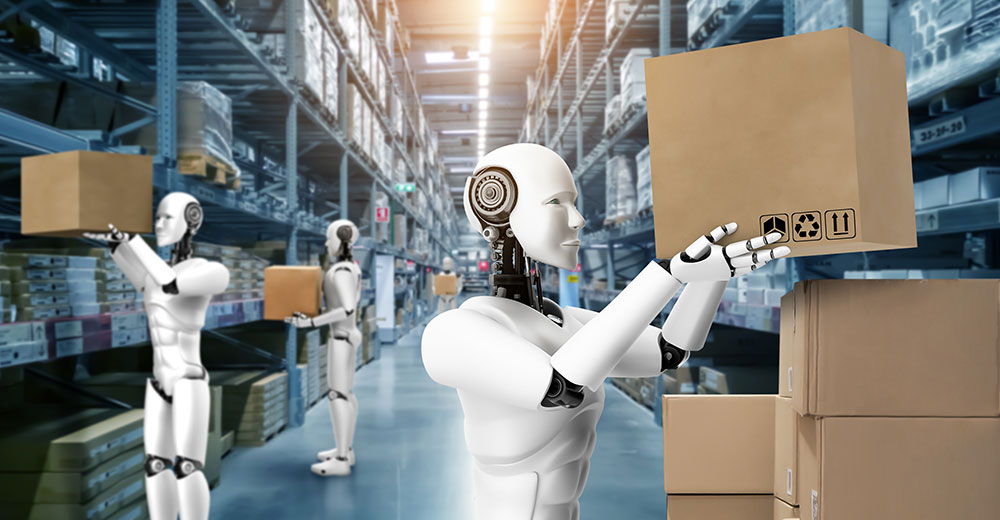Automation will claim more than 11 million U.S. jobs over the next decade, according to a report released Tuesday by Forrester.
That’s the bad news. The good news is that at the same time automation will create 9.63 million new jobs, for a net job loss for the period of 1.42 million jobs.
“The gap in jobs will present challenges to public policymakers,” observed one of the authors of the report, Forrester Vice President and Principal Analyst J. P. Gownder.
“It will mean that employees need additional reskilling into other professions, which isn’t something that every worker can accomplish on their own,” he told TechNewsWorld.
“Yet,” he continued, “the ability of public policy to succeed here will vary. In Germany, where there are tight connections between universities and employers, it will be easier to accomplish than in the United States, where employees are often expected to find their own solutions.”
Reskilling Required
Jayant Narayan, manager of the Global AI Action Alliance of the World Economic Forum, an international non-governmental and lobbying organization based in Cologny, Switzerland, added that those job losses would create challenges for both the government and private sectors.
“For governments, it raises questions around social safety nets, investment in life-long learning programs and STEM training for citizens, among other factors,” he told TechNewsWorld.
“Some of these parameters, like reskilling would have a medium to longer-term horizon,” he added, “as there might not be a quick fix or a quick reskilling opportunity.”
“For the private sector,” he added, “this raises questions around helping workers break siloed job functions and developing a broader array of versatile skills.”
Darrell West, vice president of government studies at The Brookings Institution, a non-profit public policy organization in Washington, D.C. agreed that a lot of worker retraining is going to be needed.
“There are retraining programs out there, but they’re often not very good, and they don’t qualify people for the new jobs that are being created,” he told TechNewsWorld. “We need better programs because new jobs are going to be created, but many of the people being displaced don’t have the skills needed for the new jobs.”
“A lot of the programs focus on very specific tasks,” he continued, “but the workplace is changing so dramatically it’s hard to find jobs for people who can only do one thing. We need programs that understand what firms need and what skills they are looking for.”
80% of Jobs Touched by Tech
Universities can contribute to reskilling by creating hybrid courses that blend humanities and science, maintained Narayan. “Engineers need to understand the ethics of systems and their ramifications before designing them,” he said.
West, though, asserted that community colleges are doing a better job than four-year institutions in preparing students for jobs.
“Community colleges are more geared to the local job market,” he said. “They’re trying to give people practical skills that will get them jobs. Some universities are training people for the workforce that used to exist, as opposed to the one that is emerging now.”
Forrester explained that the new jobs created by automation will be in professional services and information technology, as well as in new industries, such as renewable energy, green buildings and smart cities and infrastructure.

Source: Forrester’s Future of Jobs Forecast | Chart Credit: Forrester Research, Inc. | Reproduced with permission.
Gownder noted that people working in the new jobs will have to be conversant in working side-by-side with machines. “Whether or not you have technical skills, you need to be comfortable working on a mixed team of humans plus machines in which intelligent software plays a key role,” he said.
It added that the greatest impact of technology during the period will come in altering the tasks that make up any given job, not in taking over the job itself.
Ceding a specific task — like automating expense reports, augmenting the ability to solve data problems, or allowing a robot to mop a floor — changes the composition of a given job rather than replacing it, the report explained. Forrester expects 80 percent of jobs to be touched in that way by 2030, driving improvements in employee experience as specific tasks pass to machines.
“A lot of organizations are bringing in technologies that can augment human performance, as opposed to replacing it,” observed West. “We need to figure out how humans and robots can coexist.”
Attitude Change
Forrester also found a change in attitude among leaders about automation. Leaders have stopped viewing it primarily as a cost reduction effort and now see a broader array of perceived benefits, it explained.
It cited Forrester data showing that 41 percent of data and analytics decision-makers named cost savings as a benefit of adopting automation in 2018, but only 25 percent said the same in 2021.
Additionally, Forrester found a notable rise in the proportion of leaders noting deeper insights and competitive differentiation as benefits.
While the proportion that rated freeing up personnel to work on higher-value tasks held steady, it added, it’s now the benefit with the most resonance.
Among the broader array of perceived benefits from automation cited in the report are filling talent gaps, freeing up personnel to perform more advanced work, driving customer experience, improving quality and safety and gaining deeper insights from data to improve tasks and processes.
“Automation can be beneficial in relieving humans from dirty or dangerous jobs, and jobs that are completely routine and mundane,” West said.
Trust-Building Process
Forrester’s report noted that fears that automation will destroy jobs remain commonplace, and they aren’t totally unfounded. But the future of jobs will see a much milder impact from technologies like automation and AI than many observers expect.
Instead, it continued, technology and human workers will increasingly engage in iterative, interrelated collaborations, forming human/machine teams that drive new levels of quality, productivity, and customer — and employee — experience.
“This is a trust-building process,” Narayan said. “Workers should feel that they are part of the journey.”
“The most important thing companies can do is retrain their own ranks,” West added. “If people see an employer bringing automation in but training people for other types of jobs, workers will be more receptive to that. What workers don’t want is to be thrown out on the curb with no income.”
























































